
Protective bonding habits
Over the years, the requirements for protective bonding in the IET Wiring Regulations have changed. This article expands on James Eade’s November 2018 Wiring Matters article, where he touched upon some items of metallic equipment, which are usually bonded even when they are not considered to be extraneous-conductive-parts.
What is protective equipotential bonding?
Protective equipotential bonding is a method of applying a low impedance path from exposed-conductive-parts to extraneous-conductive-parts, to ensure equal potential throughout the installation thus preventing a hazardous potential difference occurring between such parts in the event of a fault.
Regulation 411.3.1.2 of BS 7671:2018 states that:
“In each installation main protective bonding conductors complying with Chapter 54 shall connect to the main earthing terminal extraneous-conductive-parts including the following:
(i) Water installation pipes
(ii) Gas installation pipes
(iii) Other installation pipework and ducting
(iv) Central heating and air conditioning systems
(v) Exposed metallic structural parts of the building.
Metallic pipes entering the building having an insulating section at their point of entry need not be connected to the protective equipotential bonding.”
It should be noted that the list above are only examples of extraneous-conductive-parts which may require protective bonding. It must be determined whether they meet the definition of an extraneous-conductive-part before connecting them to the main earthing terminal.
What is an extraneous-conductive-part?
The definition of an extraneous-conductive-part, as defined in BS7671:2018 is:
“A conductive part liable to introduce a potential, generally Earth potential, and not forming part of the electrical installation.”
Note that the description states, “not forming part of the electrical installation”. This is the main difference from an exposed conductive part, which is part of the electrical installation.
It should be noted that the term extraneous-conductive-part is hyphenated which means it is a single term which has a specific meaning. It can sometimes be difficult to determine if a metallic part meets the requirement. This can be overcome by breaking the definition into the three separate parts:
- A conductive part.
- Liable to introduce potential, generally earth potential, and
- Not forming part of the electrical installation.
Therefore, a metallic pipe in contact with Earth and entering the building would meet the definition of an extraneous-conductive-part, but the same metal part with a plastic insert above ground does not.
Containment such as a ladder rack or cable tray carrying sheathed or armoured cables is unlikely to be in contact with Earth and would not require protective bonding to be applied.
What is supplementary protective bonding?
A supplementary protective bonding conductor is used to connect simultaneously accessible exposed conductive parts and accessible extraneous-conductive-parts to prevent a hazardous potential difference from occurring between them. It is usually only required in special locations, such as rooms containing a bath or shower or when automatic disconnection of the supply cannot be achieved. However, the current Edition of BS 7671(2018) allows this to be omitted, providing all of the requirements in Regulation 701.415.2 are met. The main requirements being that the circuits are RCD protected and the extraneous-conductive-parts are connected to the main earth terminal through the main protective bonding conductor.
It is likely that all the circuits within a new domestic installation supplying socket-outlets, lighting circuits and cables buried less than 50 mm from wall surfaces will be RCD protected.
Why do metallic parts get bonded if they don’t need to be?
The 15th Edition of the IET Wiring Regulations (1981) has a lot to answer for in this respect. Regulation 413.7 required metal parts within the equipotential zone to be supplementary bonded to maintain the equipotential zone, where those parts:*
- Are extraneous-conductive-parts, and
- Are simultaneously accessible with exposed-conductive-parts or other extraneous-conductive-parts, and
- Are not electrically connected to the main equipotential bonding by permanent and reliable metal-to-metal joints of negligible impedance.
NOTE – Where local equipotential bonding is provided in accordance with Regulation 413-7, metalwork which may be required to be bonded includes baths and exposed metal pipes, sinks, taps, tanks, and radiators and, where practicable, accessible structural metalwork.
*Extract from 15th Edition Wiring Regulations.
The 15th Edition definition of an extraneous-conductive-part referred to ‘a conductive part likely to transmit a potential’ hence the NOTE.
The definition was subsequently changed in the 16th Edition to ‘a conductive part liable to introduce a potential’ which means that only metal parts that are already in contact with Earth may, under certain circumstances, need to be bonded.
Existing installations with metallic parts that are bonded were probably installed to the 15th Edition of the IET Wiring Regulations.
As can be seen in the list above, there was a requirement to bond nearly everything that was metal including baths, radiators, sinks, taps, and tanks. The bonding is now not required.
The 15th Edition requirements were revised in the 16th Edition of the IET Wiring Regulations in 1991, where protective bonding is only required for extraneous-conductive-parts.
There can be other reasons why bonding is carried out, when it is not required by the IET Wiring Regulations. Sometimes it can be from a lack of understanding, for example some people install protective bonding to gas and water pipework as they believe its purpose is to protect against live parts coming into contact with the pipework, causing a voltage rise. This is not the case, there are other regulations in place which protect against this danger, this is typically covered within Chapter 52, Selection and erection of wiring systems.
In other instances, it may be a case of, we do things a particular way because we were taught to do it like that and have never questioned why.
Examples of metallic parts that are neither exposed or extraneous-conductive parts but are commonly bonded
Metallic sinks
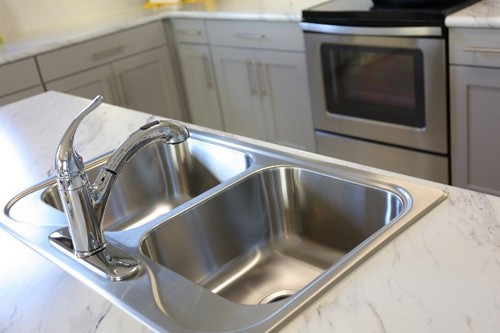
Kitchen sinks are manufactured with a tag on the underside which is often used for connecting a bonding conductor. It is common to see the sink connected with a green and yellow cable which is linked to the hot and cold-water pipes supplying the sink. This can be seen as supplementary bonding at best, but as a kitchen is not a special location, and a kitchen sink is an isolated piece of metal so cannot introduce a potential from anywhere, there is no requirement to install supplementary bonding.
Metallic kitchen furniture
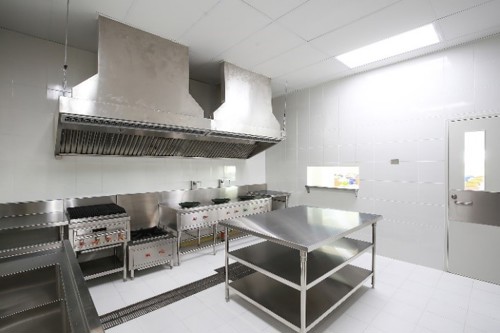
Commercial kitchens are another area where bonding is often installed but not required. Kitchen furniture is usually made from stainless steel for ease of cleaning in food preparation areas, this is often found to be bonded. This can cause issues for cleaning as the tables are usually connected together with earth clamps and cable at the feet, making it difficult to move the furniture to enable cleaning. There is no requirement in BS 7671:2018 to install bonding to metallic kitchen furniture.
Raised metal access floors
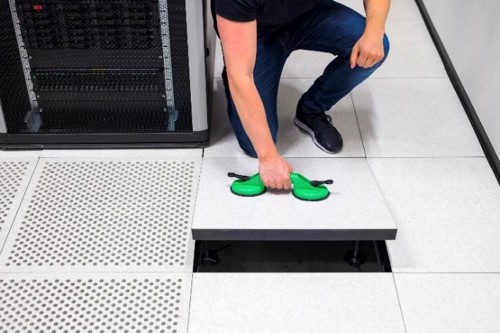
Raised access metal floors are installed to provide easy access to wiring concealed under floors. Metal tiles are installed on suspended legs which can vary in height. These support legs are often found to be bonded, connected to the main earthing terminal. Whilst the socket outlets installed in the flooring will have their own circuit protective conductors installed. The floor itself does not meet the definition of an extraneous-conductive part, therefore does not require protective bonding to be installed.
Whilst there is usually no requirement to install protective bonding to a raised access floor, because it is not an extraneous-conductive part, in certain types of installation such as heavily serviced, densely populated data centres or equipment/server rooms, there may be other requirements with regards to electromagnetic compatibility (EMC) or electrostatic discharge (ESD). However, a general office space would not meet this requirement.
Suspended grid ceilings
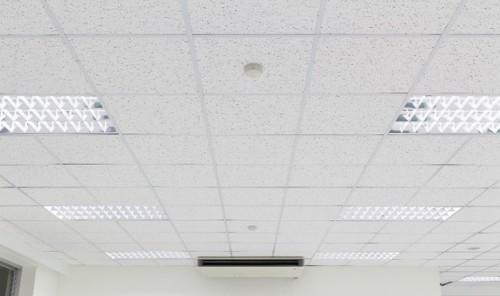
Similar to raised access floors, whilst suspended grid ceilings are metallic, they do not meet the definition of an extraneous-conductive-part. The luminaires will have circuit protective conductors installed but there is no requirement in BS 7671:2018 to install protective bonding to the ceiling grid.
Fuel Tanks
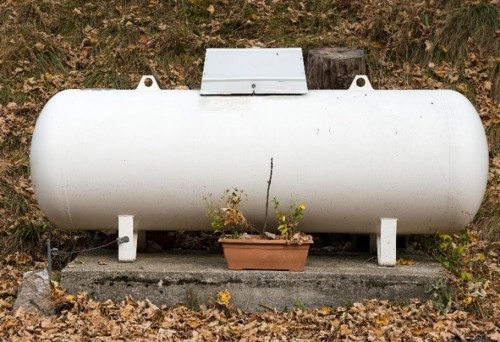
A separate earth rod is often seen installed at oil tanks but as the tank does not meet the definition of an extraneous-conductive-part, there is no requirement in BS 7671:2018 to provide protective bonding.
Whilst the tank itself does not meet the definition of an extraneous-conductive-part and will not require protective bonding to be installed, it is likely that the service pipe will require bonding where it enters the installation, providing that it is metallic, introduces earth potential and enters the building. The protective bonding connection is required to be located as close as practicable to the incoming point into the building, preferably within 600 mm and before any branch pipework.
However, it should be noted that there may be other requirements, for example it may be necessary for a lightning protection system to be installed to protect fuel storage tanks. This is not covered in BS 7671:2018. This should be determined by carrying out a risk assessment in accordance with BS EN 62305.
Special locations
Section 706 of BS 7671:2018 details further requirements for protective and supplementary bonding for conducting locations with restricted movement, for example inside a boiler vessel, metal tank, storage silo, a large diameter pipe or ventilation duct. Regulation 706.411.1.2 states that:
"If a functional earth is required for certain equipment, for example measuring and control equipment, supplementary protective equipotential bonding shall be provided between all exposed-conductive-parts and extraneous-conductive-parts inside the location and the functional earth."
Other items
Other items which are commonly bonded that generally need not be, either with main protective bonding or supplementary protective bonding include:
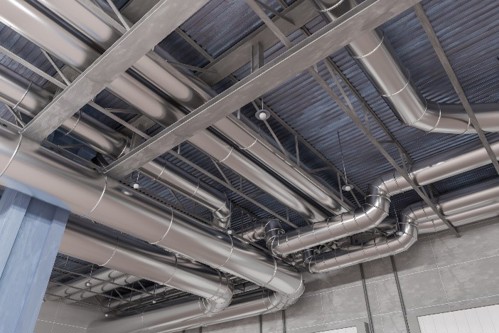
- metallic pipework which is not in contact with Earth, due to incoming service pipe being made from plastic
- metallic baths
- metallic sinks
- metallic HVAC ductwork
- metallic desk frames
- metallic doors and windows, and
- metallic cable tray and ladder rack systems.
These items are not likely to meet the definition of an extraneous-conductive-part as they do not introduce earth potential, therefore do not require protective bonding to be installed.
Observations and hazards
It is a common misconception that bonding such items won’t cause any harm even if it is not required by BS 7671:2018 so a ‘better to be safe than sorry’ attitude is taken. But it is important to remember that by connecting to the main earthing terminal, fault currents can be exported throughout the installation. These currents would likely not be present if protective bonding had not been applied. This could cause an electric shock risk for persons outside of the installation in contact with the general mass of Earth and earthed equipment such as pipework or class 1 metal equipment. Each situation should be judged on its merits.
It is also sometimes argued ‘what if’ – what if the protective conductor connection to a socket-outlet in a raised floor or to a luminaire in a ceiling grid became disconnected and the item then developed an earth fault, if the ceiling or floor metalwork were bonded this would then provide extra protection against faults. It is a ridiculous argument to consider that this provides a “second line of safety” and if installations are properly maintained and regularly inspected and tested any disconnected or damaged protective conductors would be discovered and repaired.
Some manufacturers issue guidance which can be confusing, in some cases the guidance will be as simple as, bonding to be carried out in accordance with BS 7671:2018. As it is not considered to be an exposed-conductive part or an extraneous-conductive-part, there is no requirement to provide protective bonding.
Summary
Generally, there are two main reasons to connect a protective bonding conductor or circuit protective conductor to the main earthing terminal. It is either an exposed-conductive-part, which is a conductive part likely to become live under fault conditions or an extraneous-conductive-part, which is a conductive part, not forming part of the electrical installation, likely to introduce Earth potential. In normal circumstances the items listed above fall into neither category and are usually bonded due to lack of knowledge.
Thanks to ECA and Phil MacDonald for their support and contributions to this article.
